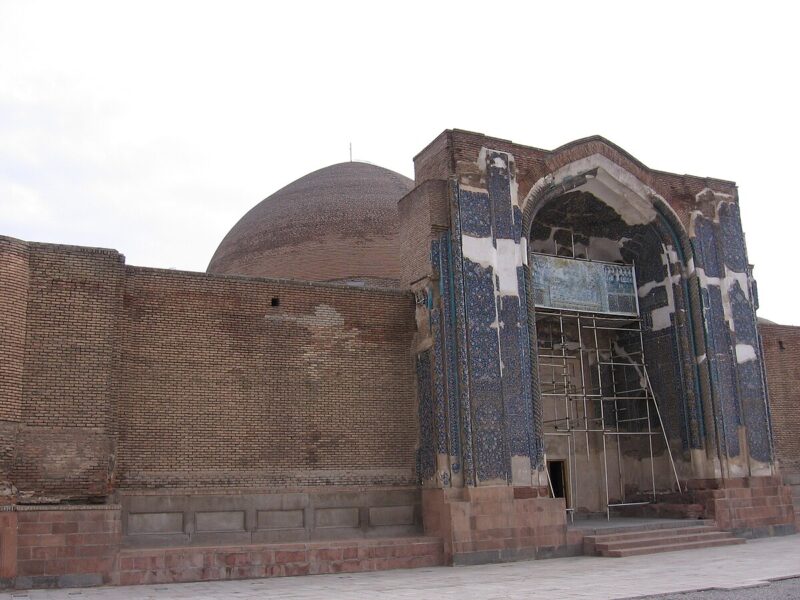The blue mosque, the turquoise gem of Tabriz
The Blue Mosque, also known as the Jahanshah Mosque and the Mozafaria Mosque, is the only survivor of the huge Mozafaria complex in Tabriz. This mosque was built during the rule of the Karakoyunluhs and by the order of Sultan Jahanshah in the year 845 AH.
https://youtube.com/watch?v=HJ3HEb8YxFw&list=PLK-SaGgQ1VnUtoKF3Q5kxC99eI1NjaC9j&index=7
Architecture and decorations:
Tiling: The facade of the Blue Mosque is decorated with turquoise and azure mosaic tiles and displays beautiful slim and geometric patterns. For this reason, this mosque is called “Blue Mosque”.
Porch: The porch of the Blue Mosque is long and lofty and decorated with mosaic tiles. On the top of the porch, there is an inscription in Tholt script, on which Surah Mubarakare Rahman is written.
Minarets: Blue Mosque has two minarets located on both sides of the porch. The minarets are decorated with mosaic tiles and their height reaches about 20 meters.
Dome: The dome of the blue mosque is big and brick and decorated with turquoise tiles.
Mihrab: The Mihrab of the Blue Mosque is made of plaster and decorated with Islamic and geometric motifs.
Cellar: Under the Blue Mosque, there is a cellar that is the burial place of Sultan Jahanshah and some of his family members.
https://youtube.com/watch?v=OF-O_UDpjTQ&list=PLK-SaGgQ1VnUtoKF3Q5kxC99eI1NjaC9j&index=5
History:
The Blue Mosque has been damaged and restored many times due to earthquakes and wars throughout its history.
Earthquake of 1193 AH: In this earthquake, the dome of the Blue Mosque collapsed and many other parts of the mosque were also damaged.
Iran and Russia wars: In the Iran and Russia wars, the Blue Mosque was captured by the Russians and used by them as a military barracks.
Restoration: The Blue Mosque has been restored in different periods. The first major restoration of the Blue Mosque was done in the Qajar period.
https://youtube.com/watch?v=GYvGeKWEGj8&list=PLK-SaGgQ1VnUtoKF3Q5kxC99eI1NjaC9j&index=3
location


